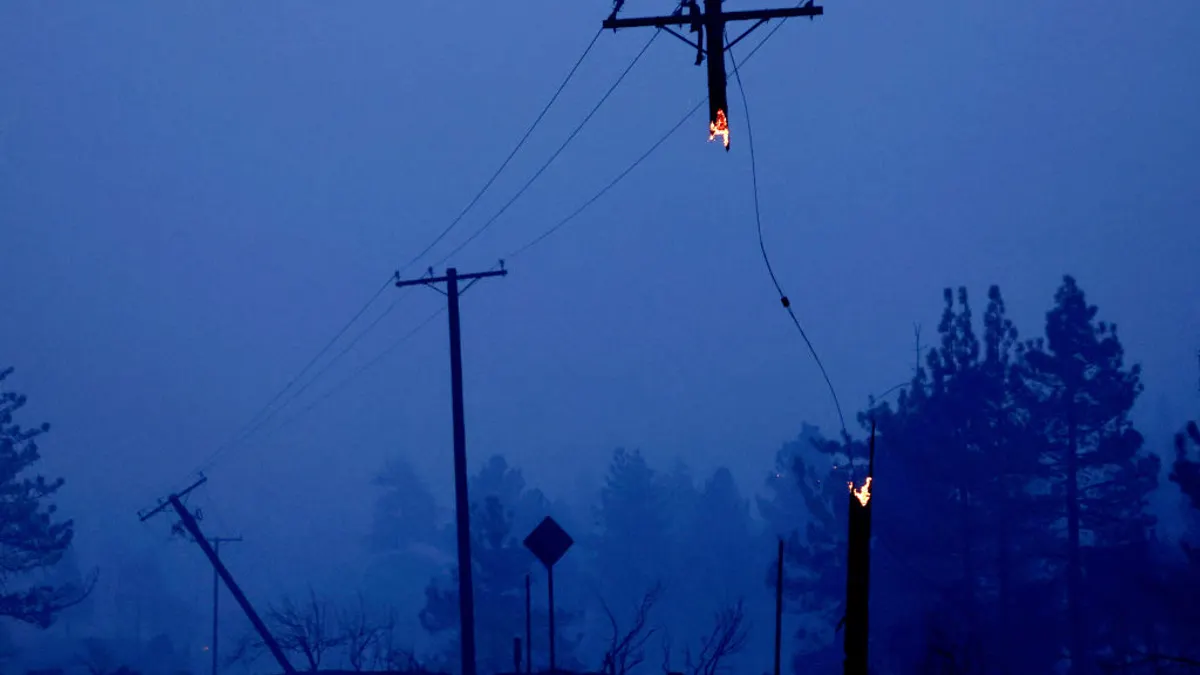Marcia Dinkins is the founder and executive director of Black Women for Change, and she leads the Black Appalachian Coalition.
The sky-high price in PJM Interconnection’s latest capacity auction for electricity has sent shockwaves across the grid operator’s 13-state Mid-Atlantic and Ohio Valley region, including my coalition’s home base in Appalachia.
Politicians have rightly recoiled when learning of the nearly $15 billion coming onto people’s power bills next year, and utility experts are highlighting flaws and needed fixes in PJM’s markets and resource interconnection process. But I want to ensure officials at PJM, and in states throughout our region, are also thinking about the stakes for the communities closest to the power plants.
PJM tells us this capacity auction result is driven by increasing demand for electricity and signals a need to keep existing power plants running — even those long slated for retirement — and also to fast track new power plants. Given that the vast majority of PJM’s power generation is from gas and coal, that means keeping some aging and polluting fossil fuel resources online longer.
I understand the need for sufficient energy resources, but for those living near coal-burning plants, we know all too well the true cost of that energy.
Coal plant emissions lead to twice the mortality rate of other air pollutants, according to a Harvard study, and lead to grave health impacts, including higher rates of cancer, developmental delays, and premature birth. In fact, over 10% of the nation’s healthcare costs — as much as $880 billion per year — are directly linked to burning coal. In the states served by PJM, burning coal has led to nearly 900,000 missed school days and a quarter-million missed work days since 2015.
To add insult to injury, those who live closest to coal-burning plants — usually in low-income neighborhoods and communities of color — also bear a disproportionate impact from rising energy bills. As families make tough choices between paying the power bill or buying groceries, there are mandates and market manipulations keeping expensive coal online and consumers paying the price.
In Maryland, PJM’s “reliability must run” agreement is keeping coal plants online that were slated for retirement while also ignoring those resources in the capacity auction. That inexplicable move added $5 billion to the summer capacity auction results.
In my home state of Ohio, controversial House Bill 6 keeps uneconomic coal plants running and consumers paying the price — to the tune of nearly $400 million in subsidies already and $850 million more forecast by 2030.
West Virginia’s Public Service Commission requires utilities to keep their coal-fired power plants operating at 69% or more of their maximum capacity no matter what — far higher than the typical 42% use rate for coal plants nationally. That means West Virginia utilities have to burn coal even when cheaper and cleaner alternatives are available, and consumers pay the price. Because the utilities now have to maintain old coal plants and buy and burn much more coal than they otherwise would, they now want West Virginians to pay more than $600 million to cover more than two years’ worth of coal plant losses.
Across the full PJM region, customers could have saved more than $707 million last year if utilities had run their coal plants only when they were economic – instead of burning coal even when cheaper alternatives were available.
There is demand for solutions that balance our energy needs with consumer protections, as we saw from a recent letter to PJM from the governors of Illinois, Maryland, Delaware, New Jersey and Pennsylvania. Instead of leaning on the “easy button” of always defaulting to incumbent power, PJM can be a leader and use all of the tools and technology available now to meet our energy and reliability needs in a cleaner, more cost-effective manner.
For example, PJM could introduce a process to add battery storage to existing clean resources — a move that an American Council on Renewable Energy report says could add 8 GW of new capacity. Another 6.6 GW of new wind, solar and storage could be added by implementing grid-enhancing technologies. Other solutions include creating a process for replacing retiring fossil plants with battery storage by reusing existing interconnection rights; requiring plants with “reliability must run” agreements to offer into the capacity market; making greater use of interregional ties and the excess capacity on merchant lines — a move an NREL study notes could increase reliability and reduce costs by billions of dollars — and more quickly processing the more than 280 GW of capacity stuck in the interconnection queue.
For years, Appalachians have shouldered a disproportionate share of the costs that come with a lack of progress in serving our energy needs in a fair and equitable way. We deserve better. We deserve access to power that is clean, power that provides well-compensated jobs, and power that doesn’t make us sick. We need more of our elected officials across Appalachia and the greater PJM footprint invested in what’s actually best for those who live, work and pay bills here.






















